Just before Christmas and in the first two weeks of January a series of gardening programs were shown on BBC2 called The Great British Garden Revival and one of the topics they covered was Exotic Gardening. The series had ten episodes with each episode covering two areas of gardening that they reckon needs reviving in the British culture. So doing the maths that's twenty gardening topics or areas getting a thirty minute slot each.
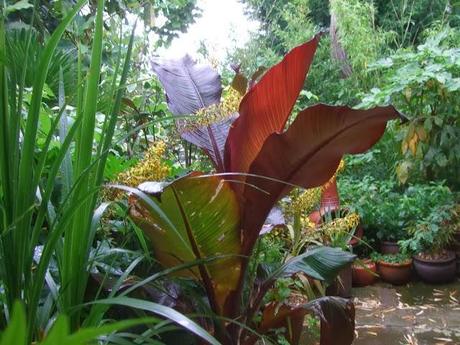
There have been very few new gardening programs on British television lately so the idea of seeing a new gardening program is enough reason alone to be a little bit excited about it. But as you can imagine it was the exotic gardening part that we anticipated the most.

I won't go into too much detail reviewing or critiquing the show, there are other journalistic blogs out there who specialise in that sort of thing wherein they can be as praiseful or acid about the show much to their heart's content. For opinion's sake though I would say that...
The show on the whole and the exotic gardening section was enjoyable to watch and entertaining. If you haven't seen it yet but have the chance to then by all means do so. But if you don't, fret not and don't lose sleep over it, you haven't missed much either.
In the exotic gardening feature, one thing that did stood out for me was the over simplification of the process. But what can you expect from a one off thirty minute program covering a very broad subject matter? Certainly not a portion highlighting the difference between Xanthorrhoea glauca and Xanthorrhoea preisseii...
Neither of us are right type of audience that needs convincing that exotic gardening needs reviving. After all, we're both deep into this style of gardening and year in year out we wave the flag and do our share in promoting it. I'd say we were never the intended target audience for such a program in the first place. But it did get me thinking...
Does exotic gardening need reviving in the first place?
Yes it does as it did go into decline. But not because of the general reasons that were mentioned in the program but rather because of far more serious matters that had happened recently.
This time, coming not from a television presenter and their sometimes misguided researchers but from two amateurs that actually do exotic gardening....
The exotic gardening scene in the UK was robustly alive, at its peak, and thrived so well, from the nineties until the latter part of the noughties. The community of exotic gardeners were vibrant and more and more people were getting interested in this style. But towards the end of the noughties it suffered two major blows that sent this particular approach to gardening into a temporary decline:
The recession;
And the succession of harsher winters, the worst of which was winter 2010-11.
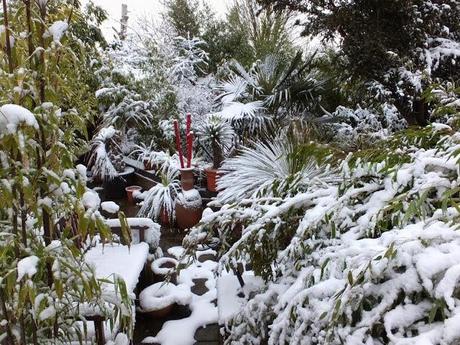
But before these two blows arrived, what was it like the last time exotic gardening did so well? Now let me remind you...
This was an era wherein winters had been mild and the economy was doing well. It was also a period wherein China and Vietnam had opened their doors and became more lenient with botanists and plant collectors, hence paving the way for even more new and never before seen plants to come in to the western hemisphere, on top of the already established set of exotic plants from the southern hemisphere (South Africa, Australia, and New Zealand especially). Now these areas have climates that are closest to ours, if not colder depending on the altitude of the plant origin, hence adding to the appeal of them, of new exotic plants being potentially very applicable to UK (and areas of similar climate) gardens.
More importantly, this was an era that mild winters had been the norm and more and more plants that were previously not able to cope with 'traditional' British winters outside thrived in that period. Gardeners continued to experiment with borderline hardy plants and success rate was high. Plants that previously had been regarded as bedding before, grew into architectural forms and fascinated increasing numbers of people. Nurseries continued to develop and discover new varieties and cultivars of these borderline hardy plants, and the market for them were steadily increasing.
Tall, multi headed Cordyline australis became part of the norm for many British gardens, and for those seeking something more unusual you can also buy the likes of a Cordyline 'Jurassic Jade' and plethora of other named varieties. It was that kind of era.
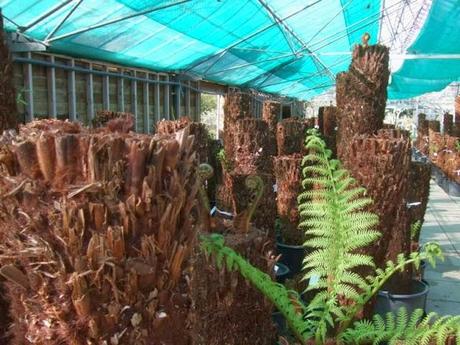
It was also an era that the economy was booming, and a majority of people with employment felt more secure and better off. There was more spare money floating around to spend on frivolous things such as....plants. Especially exotic ones. The bigger the better. Property prices were booming and continued to rise. This made the business of property development very lucrative and people took more interest in improving their homes, both inside and out as putting on the right changes would have paid dividends in increasing the value of ones house into many folds. People moved around a lot more often too, riding on the sudden surge of property equity and finding themselves upgrading from one house to another, bigger and better each time.
Hence this was the era of property makeover shows, both interior and exterior. The interest of the viewing public in improving the house and garden were at an all time high. There were a plethora of garden makeover programs on tv all proclaiming that by making your garden look better and putting in improvements made a house increase in value and more saleable.
And with these garden makeover shows, more often than not designers used architectural plants to provide instant impact and pleasing changes to the gardens they had put their hands on to. And more often than not, these architectural, instant impact plants were exotic plants.
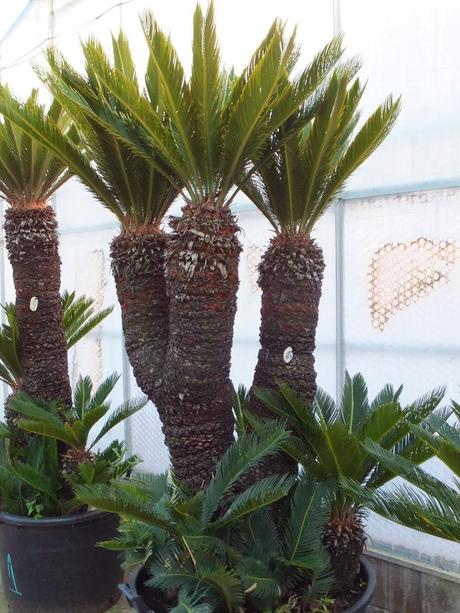
And the more exposure these exotic plants got, the more people got drawn and hooked into this style. One moment they are staring at an Ensete ventricosun 'Maurelii', or perhaps a Phyllostachys aurea, Trachycarpus fortunei even, and throw Agave americana too for good measure. Relatively inexpensive plants and readily available. The next moment they're considering putting in a special order for a one meter trunked Butia eriospatha.
Exotic gardening then was going from strength to strength and so were the nurseries catering to such style of gardening.
But came the recession and the trilogy of harsher winters. And to make matters worst, they both came at the same time.
And so the recession came and suddenly the financial security of many people was shaken to the core. Debt and borrowing was high. Companies and business were closing left, right, and center. People were being made redundant and losing their jobs. Property prices started to plummet. And for a period people simply stopped unnecessary spending.
Bad news for business, and that included the plant nursery trade.
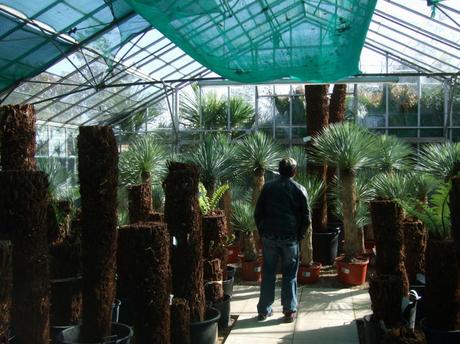
And then throw in to the mix, the series of harsher winters. So many exotic gardens were devastated by this successive harsh winters. At the worst of it nearly all Cordyline australis were cut back down to the ground. Some Trachycarpus fortunei were killed off in northern parts of the country. So many large and expensive specimens were wiped out in those three winters. Confidence in exotic gardening had plummeted, even amongst its die hard enthusiasts. Disheartened by the losses in their garden, some exotic gardeners never did replace the ones they lost, for a fear of losing another one again, and on the whole became more reluctant to spend.
Unfortunately, it was not just the gardens that suffered losses but the nursery trade too. Heating an entire growing site is not always feasible if not downright impossible. Nor is it always economically viable. So many stocks were lost in those three winters and entire collections and propagating materials being wiped out were not unheard of. So many rare and unusual plants were lost during that period, some forms would presumably take a long time to return to UK cultivation. It was at this time that one nursery told us of their aim to heat a greenhouse up to the balmy temperatures of -3C.
The loss of stocks had set back many nurseries and some struggled to make a decent living, particularly those who had imported plants from warmer climates often on credit terms. How could these nurseries make money when they had such stock losses? And with the recession not many people were buying. And those who can still had the resources often faced a reduction in choice.
Loss of stocks, no income, and we saw so many nurseries close down in the past few years and some of the ones remaining, struggling.
Double trouble and suffer the exotic gardening!
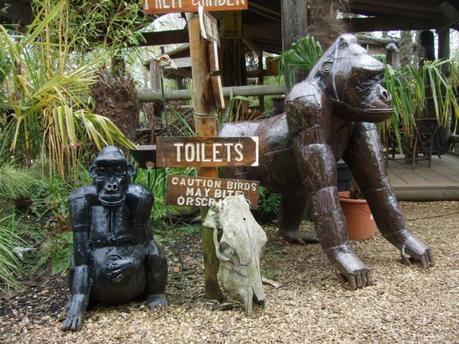
This decline however is temporary. We believe that the popularity of exotic gardening will be revived and regain its former glory.
First of all, with devastation comes adaptation. Those who continued to persevere with this style of gardening have adapted and learned their lessons and as a result, continue to have good looking gardens that are just as good, if not better than what they had before.
And the signs of recovery from recession is starting to creep up and looks like property prices are increasing again. Which could mean a resurgence in home and garden makeover shows, etc. And the cycle continues...
As for the winters, well it's looking like we're in for a mild one temperature wise this time but to be honest, better safe than sorry. Three bad winters is enough reminder never to be too complacent and base your garden in a mostly borderline hardy planting scheme. There are so many hardy substitutes out there that are able to give that exotic, jungle style look with the risk of winter death very minimal. Experiment and roll the dice too of course, you might get lucky for years and years and it's in experimentation that gardeners learn which ones are a lot tougher (or not) than first perceived.
A question of money and finance, is exotic gardening an expensive style of gardening? Do you have to fork out loads of cash to have the look you desire?
The answer is no, not at all. It is completely possible to have an exotic garden even on a tight budget. Not all exotic and exotic looking plants are expensive, in fact most of them are not. And for some plants, you can always start from small as some of them size up relatively quick.
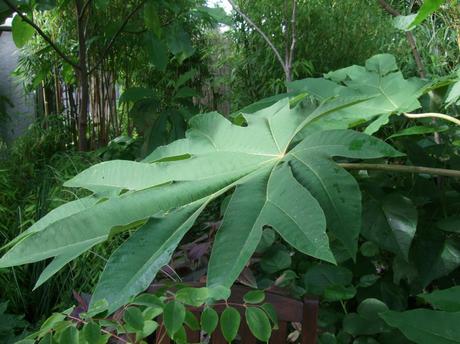
But if you let it, it can be a very expensive style of gardening, just like any other type of discipline or hobby. On bigger and rarer specimens, you may have to flash the cash in order to obtain them. That's just the way it is. But you are definitely in control, you can have it as inexpensive or as costly as you want it to be.
And now back to the title, will we see a revival in exotic gardening soon? Maybe not too soon but surely we will. Not because of a TV show but because of the passion of those who remain loyal to this style of gardening who may in turn help inspire others. This exotic gardening bug is very infectious after all, and with economic recovery the spread of which can go into all time high again.
Mark :-)

